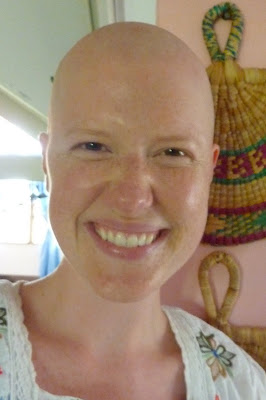On Pruning and Classifying Trees
I have spent another wonderful week in Sandiara with Beersheba Project. The name of this 250-acre (100 hectare) plot of land on which I am working finds its source in the Biblical account in Genesis 21 where Abraham plants a grove of trees in the wilderness of Beersheba as a covenant between God and man. Before Beersheba constructed a fence nearly 10 years ago to enclose this piece of earth, there were only deforested fields as far as the eye could see, a common sight in the Sahel region of Senegal. Miraculous is the fact that I spent the last week combating overgrown trees. How nature loves to self-resuscitate when left to solitude devoid of mankind’s machinations.
These are the before and after photos of one of the trees I fought and conquered!
My hearty trimming attempt will make way for a fruit orchard. I used a technique called FMNR (Farmer Managed Natural Regeneration) that Beersheba favors for assisting in the healthy and sustained growth of its trees. Some trees were much more compliant than others, for instance those without thorns! Two varieties in particular, the Acacia Séal and the Procipice, were fiendishly opposed, like a stubborn two-year old or a cantankerous kitten, to getting their limbs trimmed and spruced. I bled from the scratches they inflicted and recoiled from the poisonous slivers they jammed into my feet and my hands. Rubber-soled sandals provide no barrier to these trees’ insidious thorns. I even fell into a pile of thorny branches and spent 15 minutes extricating a thorn from the palm of my hand! All that being said, I felt extremely exalted and gratified by the pruning process and the emergence of the finished product. Rebirth and regeneration are two processes that conjured firm images in my mind while digging out the healthy tree from the encumbering vines and superfluous branches.
Another task I endeavor to complete before the end of my month-long internship is the classification of the tree varieties on Beersheba’s property. The finished product will be a bilingual (French/English) guide to inform participants, visitors, students and investors of the plethora of natural tree diversity that exists on its roughly 250 acres (100 hectares) of revivified wilderness, which has been left untouched for nearly ten years by virtue of the vision for Beersheba. The idea is to utilize with utmost sedulousness the resources nature has returned to this plot of land to teach the local population to farm the way in which God intended, coexisting with trees, the sentinels of environmental preservation. My little guide will be a pertinent tool for the incoming students to commence their apprenticeship as careful and conscious farmers and keepers of God’s glorious creation.
Tip #12 for Surviving in Senegal: When you get in a fight with an Acacia tree, it is best to wear leather shoes and keep a tweezers close by! Apparently Acacia thorns are poisonous, so even when the splinter removal process is complete, the venom is left in a painful, reddened area that remains for at least 24 hours.








Comments
que le Seigneur continue a vous assisté et a vous soutenir dans l’ensemble de vos projets, soyez bénis Amen!
LUC KABORE